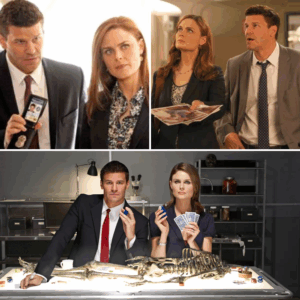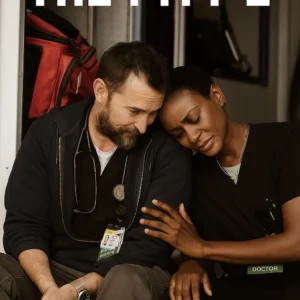In the shadow of his iconic roles as Superman in Man of Steel and Geralt of Rivia in The Witcher, Henry Cavill delivered a performance in 2017 that remains one of his most compelling yet overlooked: Captain Syverson in Netflix’s Sand Castle. This Iraq War drama, directed by Fernando Coimbra and written by Chris Roessner, a veteran of the 2003 invasion, offers a gritty, human-centered look at the conflict’s complexities. Despite its modest 47% approval rating on Rotten Tomatoes and a quiet release, Sand Castle stands out as a must-watch gem for its authentic storytelling, Cavill’s nuanced portrayal, and its unflinching depiction of the moral ambiguities of war. As Cavill navigates a new chapter in his career, with roles in Argylle and The Ministry of Ungentlemanly Warfare, it’s time to revisit this understated masterpiece that showcases his depth as an actor and the raw humanity of a war often oversimplified in cinema.
A True Story Rooted in Reality
Sand Castle, released on April 21, 2017, on Netflix, is inspired by the real-life experiences of screenwriter Chris Roessner, a machine gunner in Iraq’s Sunni Triangle during the 2003 invasion. The film follows Private Matt Ocre (Nicholas Hoult), a reluctant Army Reserve soldier who enlisted in July 2001 to fund college, only to find himself in the chaos of war after 9/11. Tasked with repairing a water pumping station in the hostile village of Baqubah, Ocre’s platoon, led by Sergeant Harper (Logan Marshall-Green) and overseen by Special Forces Captain Syverson (Henry Cavill), faces resistance from locals, insurgents, and their own doubts about their mission’s purpose. The film’s premise—a seemingly simple task of restoring water amid a war zone—serves as a microcosm of the U.S.’s broader “winning hearts and minds” (WHAM) strategy, which often faltered under the weight of cultural divides and unintended consequences.
Unlike blockbuster war films like Saving Private Ryan or American Sniper, Sand Castle avoids grandiose heroics, focusing instead on the mundane yet perilous task of delivering water. Its authenticity stems from Roessner’s firsthand perspective, which he wrote during a Christmas break at USC, pouring his experiences into a script that landed on the 2012 Black List of unproduced screenplays. “I didn’t want to wrap everything up into a tidy package,” Roessner told The Credits, emphasizing his commitment to a raw, unpolished depiction of war. This restraint, paired with Coimbra’s direction, creates a film that feels closer to The Hurt Locker or Jarhead than typical Hollywood war epics, offering a grounded look at soldiers as flawed, human figures rather than mythic heroes.
Henry Cavill’s Transformative Performance
Henry Cavill’s role as Captain Syverson is a departure from his larger-than-life characters. Sporting a buzz cut, beard, and a non-specific Southern accent, Cavill embodies a battle-weary Special Forces officer who is both commanding and deeply conflicted. Unlike his Superman, who radiates hope, or Geralt, who exudes stoic strength, Syverson is a complex figure grappling with the futility of his mission. “Cavill’s performance showcases his darker side, humility, and ability to elevate those around him,” noted Collider. His Syverson is not a hero in the traditional sense; he’s a soldier aware of his irrelevance in the eyes of the locals, as seen in tense exchanges with village leader Arif (Nabil Elouahabi), who condemns the military’s failures to protect civilians.
Cavill’s screen time is limited—some reviews call his role a “glorified cameo”—but his presence is magnetic. In one scene, described by a Reddit user as a standout, Syverson conveys his entire character arc in three lines while sitting, exuding authority and exhaustion. “He’s intelligent, passionate, and willing to listen, avoiding the cliché of the one-dimensional action hero,” wrote Bare Arms Blog. Cavill’s ability to command the screen with minimal dialogue, often through a steely gaze or a curt order, underscores his versatility. His Syverson hints at xenophobia and self-hatred, a stark contrast to his blockbuster roles, making Sand Castle a showcase of his range. As CBR noted, “Cavill’s rugged look and longstanding respect for the military made him an ideal fit,” bringing authenticity to a role that could have been stereotypical in lesser hands.
A Narrative of Nuance and Tension
Sand Castle sets itself apart by refusing to take sides in the Iraq War debate. Unlike Green Zone, which critiques the invasion’s motives, or American Sniper, which lionizes its soldiers, Sand Castle presents a neutral, humanistic lens. “It doesn’t espouse a single political view, offering triumphs and failures for soldiers and citizens alike,” wrote IGN. The film’s central mission—repairing a water pump destroyed by a U.S. airstrike—highlights the irony of fixing what the military broke, a metaphor for America’s broader foreign policy missteps. As Slant Magazine observed, “The film unwittingly reveals itself as a microcosm of America’s foreign policy in the Middle East: Blow things up, blame others when fixing goes wrong, and move on.”
The story unfolds through Ocre’s eyes, a reluctant soldier who tries to escape duty by slamming his hand in a Humvee door, a desperate act that fails to send him home. Hoult’s performance, while criticized by Roger Ebert as “flat and uninteresting” without strong direction, captures the everyman’s dread of a war he never expected. Logan Marshall-Green’s Sergeant Harper, the platoon’s stoic leader, provides a counterpoint, his professionalism grounding the unit. Supporting performances by Glen Powell as the unhinged Sergeant Chutsky and Neil Brown Jr. as Sergeant Enzo add depth, though some reviewers, like Incluvie, noted the ensemble’s lack of distinct personalities made it hard to connect emotionally.
Coimbra’s direction shines in tense, well-crafted set pieces. A tracking shot of the Baghdad invasion and a roadside ambush convey the chaos of war without gratuitous violence. “Coimbra seems more confident filming battles over bartering,” noted Empire, highlighting the film’s ability to wring tension from small-scale conflicts. The music, with “Lawrence of Arabia” and “Apocalypse Now” vibes, and a soothing end-credits song, adds emotional weight, leaving viewers reflective rather than exhilarated. However, some criticized the editing, with IMDb reviews noting distracting zooms and jump-cuts that disrupt the flow.
Critical Reception and Underappreciation
Sand Castle received mixed reviews, with a 47% approval rating on Rotten Tomatoes based on 17 reviews and an average score of 5.3/10. Critics praised its authenticity and restraint but found it lacking in originality. “It offers too little to the War is Hell genre to be noteworthy,” wrote Roger Ebert, while Hindustan Times called it “bland” despite a promising first hour. Others, like IGN, lauded its “smart, touching, and slightly bloody” approach, appreciating its refusal to vilify or glorify. Rotten Tomatoes user reviews were more generous, with some calling it “the best war movie I’ve seen yet” for its grounded military scenes and lack of Hollywood pathos.
The film’s muted reception may stem from its release strategy. As a Netflix original, it bypassed theaters, which JoBlo argued gave it “TV-level production values” that felt more like an extended pilot than a feature film. “It’s not good enough to have played theatrically,” wrote Chris Bumbray, suggesting its low-key streaming debut limited its impact. Additionally, the Iraq War’s overexposure in media, from 24-hour news to films like The Hurt Locker, dulled audiences’ reactions. “Our senses have been dulled by a constant drip feed of similar hopeless stories,” noted Bare Arms Blog, predicting Sand Castle might be heralded as a genre highlight in decades to come.
Why Sand Castle Deserves a Second Look
Sand Castle is a gem for several reasons. First, its authenticity, drawn from Roessner’s experiences, offers a rare soldier’s-eye view of the Iraq War. Unlike Rambo-style heroics, it portrays soldiers as tired, afraid, and doubtful, making them relatable. “Instead of loud speeches, there’s silence and dust,” wrote a Rotten Tomatoes reviewer, praising its focus on human frailty. Second, its restraint—avoiding excessive violence or political preaching—sets it apart. The film’s climax, where Ocre boards a plane with psychological scars, leaves the fates of characters like Syverson ambiguous, mirroring the war’s unresolved nature.
Cavill’s performance is a standout reason to watch. His Syverson is not the focal point but a pivotal force, embodying the frustration of a soldier whose efforts are met with contempt. “Cavill’s disturbing complexity is absent in his blockbuster roles,” noted Collider, making Sand Castle a showcase of his ability to convey depth with limited screen time. The film’s setting in Baqubah, with its sand-swept vistas and tense village dynamics, creates an immersive experience, enhanced by Coimbra’s visual storytelling and Roessner’s lived-in script.
Cavill’s Career and the Film’s Legacy
Cavill’s career has seen highs and lows. After Sand Castle, he faced setbacks—losing James Bond to Daniel Craig, the Man from U.N.C.L.E. franchise stalling, and his Superman role ending post-Black Adam. Yet, his work in Mission: Impossible – Fallout and Enola Holmes shows his versatility. Sand Castle remains a testament to his ability to elevate smaller roles, making it a must-watch for fans and newcomers. As CBR argued, “Cavill’s performance perfectly exemplifies his acting skills and on-screen artistry.”
The film’s relevance endures as a reflection on the Iraq War’s legacy. Its depiction of the WHAM strategy—winning hearts and minds—resonates in discussions of modern conflicts. While critics like Slant Magazine saw it as a critique of U.S. foreign policy, others, like FilmSnobReviews, praised its focus on cultural tensions over action. Its availability on Netflix makes it accessible for rediscovery, especially as war films regain traction amid global tensions.
A Call to Rediscover
Sand Castle is not a perfect film. Its familiar themes and uneven pacing, as noted by Empire and JoBlo, prevent it from reaching the heights of The Hurt Locker. Yet, its strengths—Cavill’s gripping performance, Roessner’s authentic script, and Coimbra’s restrained direction—make it a hidden gem. For those seeking a war film that prioritizes humanity over heroics, Sand Castle is a must-watch. As Texas recovers from its own 2025 floods, stories of resilience, like those in Baqubah, remind us of the enduring cost of conflict and the quiet strength of those who face it.





